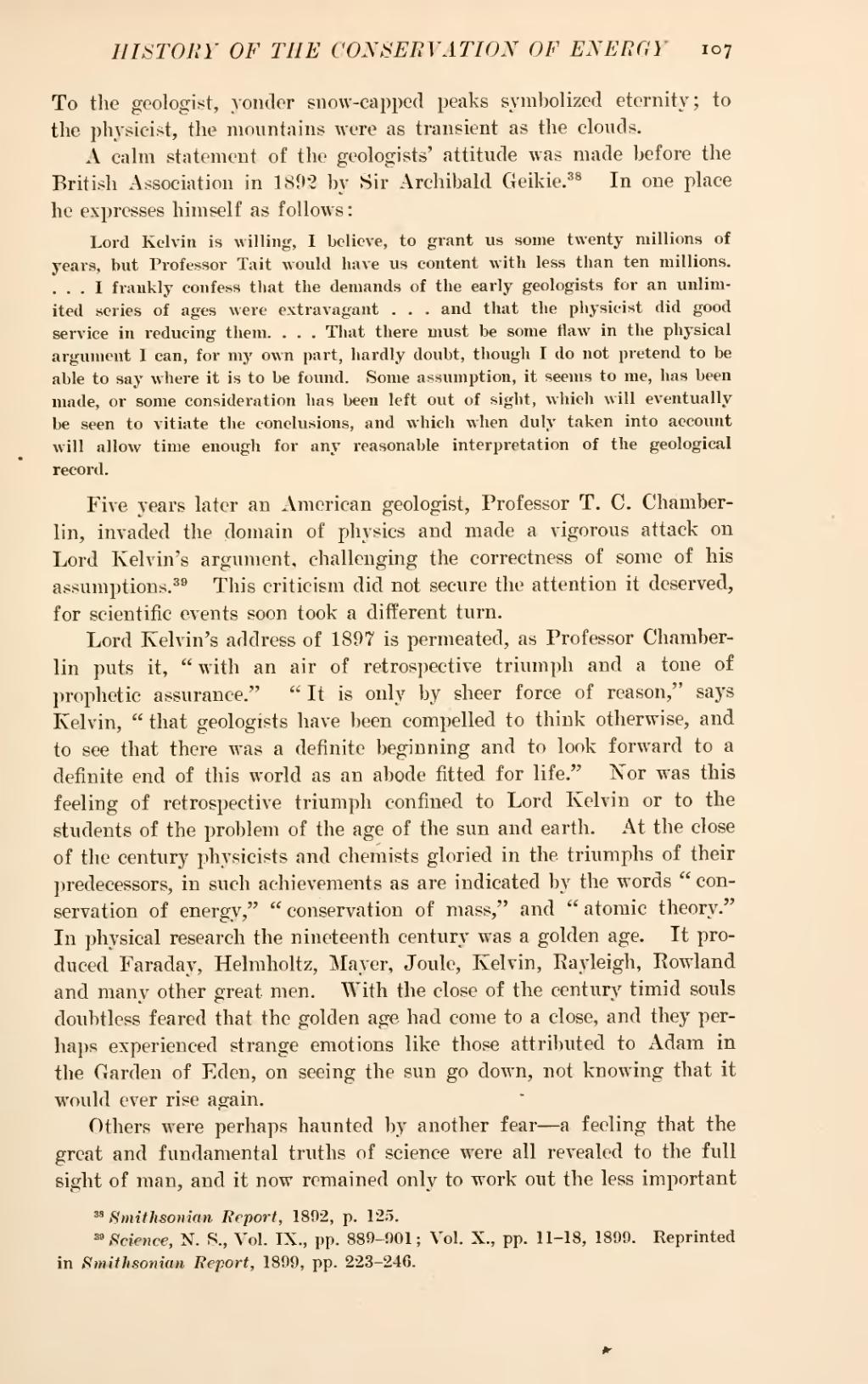To the geologist, yonder snow-capped peaks symbolized eternity; to the physicist, the mountains were as transient as the clouds.
A calm statement of the geologists' attitude was made before the British Association in 1892 by Sir Archibald Geikie.[1] In one place he expresses himself as follows:
Five years later an American geologist, Professor T. C. Chamberlin, invaded the domain of physics and made a vigorous attack on Lord Kelvin's argument, challenging the correctness of some of his assumptions.[2] This criticism did not secure the attention it deserved, for scientific events soon took a different turn.
Lord Kelvin's address of 1897 is permeated, as Professor Chamberlin puts it, "with an air of retrospective triumph and a tone of prophetic assurance." "It is only by sheer force of reason," says Kelvin, "that geologists have been compelled to think otherwise, and to see that there was a definite beginning and to look forward to a definite end of this world as an abode fitted for life." Nor was this feeling of retrospective triumph confined to Lord Kelvin or to the students of the problem of the age of the sun and earth. At the close of the century physicists and chemists gloried in the triumphs of their predecessors, in such achievements as are indicated by the words "conservation of energy," "conservation of mass," and "atomic theory." In physical research the nineteenth century was a golden age. It produced Faraday, Helmholtz, Mayer, Joule, Kelvin, Rayleigh, Rowland and many other great men. With the close of the century timid souls doubtless feared that the golden age had come to a close, and they perhaps experienced strange emotions like those attributed to Adam in the Garden of Eden, on seeing the sun go down, not knowing that it would ever rise again.
Others were perhaps haunted by another fear—a feeling that the great and fundamental truths of science were all revealed to the full sight of man, and it now remained only to work out the less important
